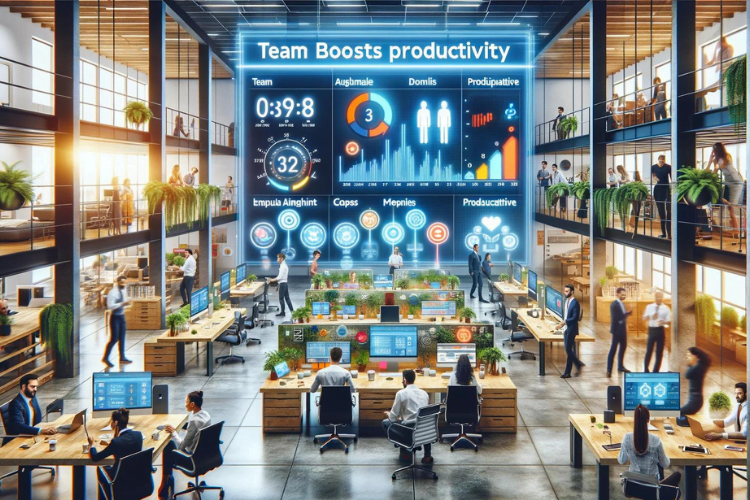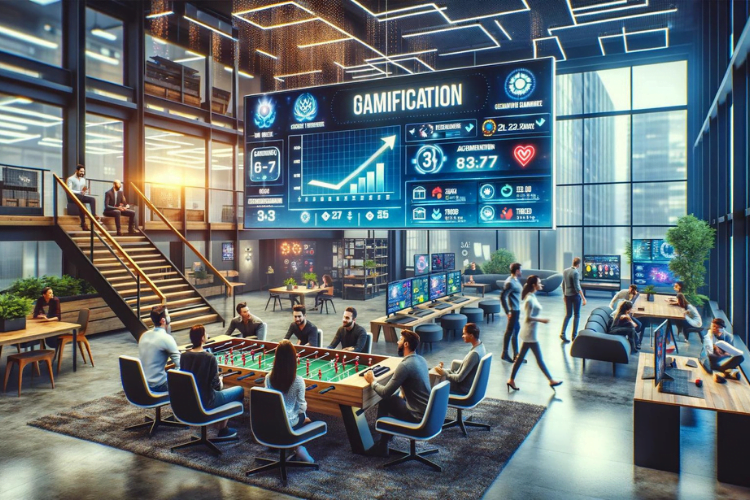Balancing Productivity and Emotion with Gamification

Why Complex Humans Need More Than Just Metrics
Humans aren’t machines, yet far too many systems treat them that way: productivity in, results out. Emotions? Treated like an afterthought. At Motivacraft, we see real people as multidimensional—driven by logic and feeling. In our upcoming YouTube video, “Designing for Complex Humans: Balancing Productivity and Emotion,” we explore how to create gamified experiences that honor both sides of the human equation. In this article, you’ll discover some keynotes for balancing productivity and emotion:
- Why the productivity vs. emotion binary fails.
- How to design for human rhythm, not robotic consistency.
- Why tone matters as much as features.
- How to map motivation instead of applying pressure.
- Who needs to hold the emotional keys to keep your system alive.
Ready to build systems that respect the full human experience? Let’s dive in.
The False Binary: Why Productivity and Emotion Amplify Each Other
There’s an old-school idea that you must choose: make your system ruthlessly efficient or make it emotionally engaging. That’s a trap. Productivity and emotion aren’t opposing forces—they’re superpowers that amplify each other.
- Productivity without feeling turns tasks into chores. Numbers tick up, but users feel hollow.
- Emotion without direction can become mere decoration: confetti and emojis with no real sense of progress.
Imagine two scenarios:
- Purely productive: You complete a task. A counter flashes +1. That’s it.
- Balanced approach: You complete the same task. A color ripple passes across the UI, a friendly message pops up—“Great job leveling up!”—and a teammate’s reaction emoji appears.
Same output, but the second experience feels like progress. At Motivacraft, we weave emotional cues—micro-animations, personalized messages, social touchpoints—into productivity flows so that doing more also feels like caring more.
Humans Are Rhythmic, Not Robotic: Designing for Flow and Pause
People don’t work in perfect straight lines. They surge ahead, then need to catch their breath. That’s why designing for constant daily tasks—it’s a recipe for burnout and drop-off.
Embrace the Natural Rhythm
- Weekly missions instead of daily check-ins give users flexibility and ownership over their schedules.
- Pause boosts: If someone needs to step back, they’re not penalized. They earn a “time-out token” and can catch up through optional challenges later.
This approach recognizes that engagement comes in waves. By honoring those waves, you make space for genuine flow, rather than forcing participation through rigid deadlines.
Tone Is a Feature, Not a Decoration: Speak Human to Human
Your words are part of your UX. A neutral label like “Mission Failed” delivers a punch—but a simple shift to “That one didn’t land—let’s adjust and retry” turns failure into a fresh opportunity.
Microcopy That Moves People
- Encouraging reframes: Replace “Error” with “Opportunity to learn.”
- Positive nudges: Swap “Due now” for “Whenever you’re ready, here’s your next step.”
Consistency Across Channels
From in-app messages to email reminders, maintain the same empathetic, encouraging tone. Your system’s voice should feel like a coach: honest, supportive, and aligned with your brand personality.
Motivation Needs Maps, Not Pressure: Show Paths, Don’t Push People
Urgency tactics—countdowns, nagging pop-ups—can work briefly but often backfire. At Motivacraft, we prefer to give users a sense of direction rather than stoke anxiety.
- Progress arcs visualize how far users are from goals, turning abstract tasks into clear pathways.
- Completion zones highlight safe checkpoints so users celebrate milestones along the way.
- Momentum badges reward consistency and small wins, reinforcing forward movement.
When users see where they are, where they’re going, and the steps in between, motivation feels navigable instead of forced.
Who Holds the Emotional Key? Building Feedback Loops
Great design sets the stage, but someone has to listen. The most emotionally resonant systems pair smart UX with a dedicated steward:
- HR leaders track team sentiment and inject personalized messages.
- Team leads spot dips in motivation and roll out group challenges to re-engage.
- Gamification champions within the user base collect feedback and guide feature tweaks.
This human-in-the-loop setup creates a living feedback loop. Your system’s emotional intelligence depends on real people paying attention to the metrics—and to the vibes.
Designing for Complex Humans, Not Idealized Ones
Complex humans need systems that balance rigor with warmth, structure with space, and guidance with empathy. At Motivacraft, our mission is to help you build gamified experiences that honor the full spectrum of human motivation.
Take the next step: Want to see how we do it? Book a free Motivacraft demo and start designing not just for productivity, but for people.
Thanks for reading! Drop a comment or share how you’re balancing productivity and emotion in your own systems.


